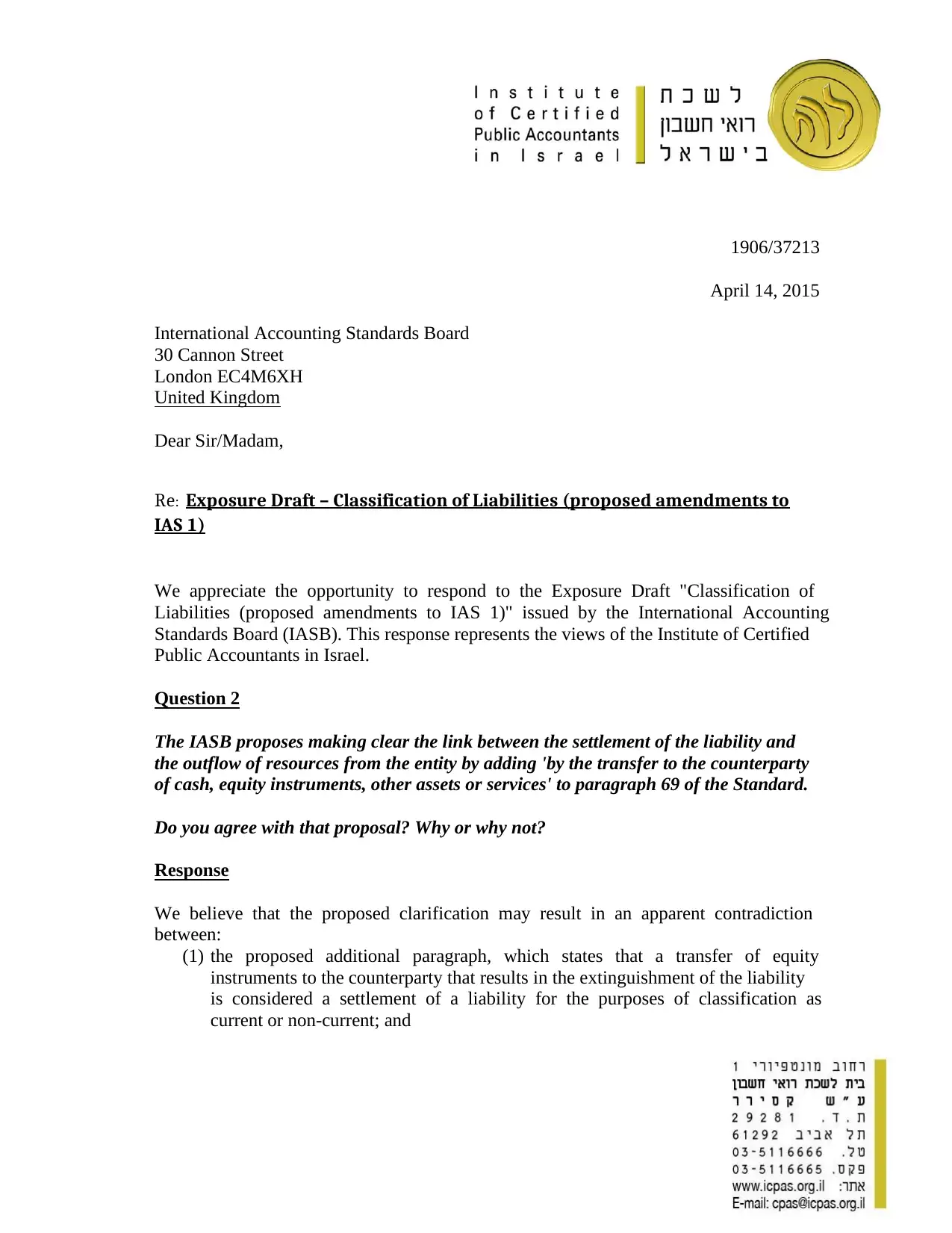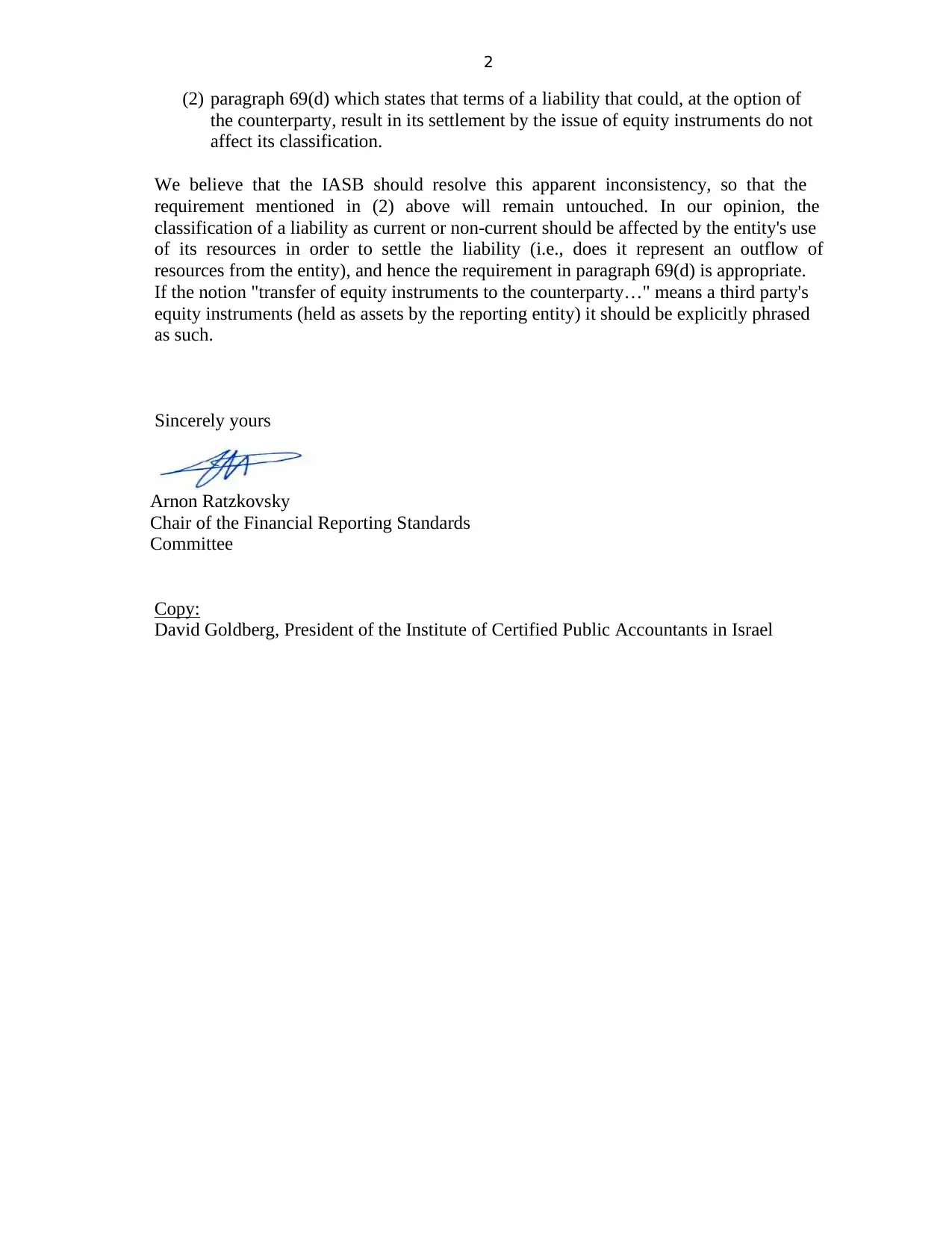Analysis of IASB Liabilities Classification Amendment Proposal
VerifiedAdded on 2023/03/17
|2
|389
|53
Report
AI Summary
This report presents an analysis of the International Accounting Standards Board (IASB) proposal regarding the classification of liabilities. The report focuses on the proposed amendments to IAS 1, specifically addressing the clarification of liability settlement and the use of equity instruments. The author, representing the Institute of Certified Public Accountants in Israel, expresses concerns about the potential contradiction between the proposed paragraph and paragraph 69(d) of the Standard. The report emphasizes the importance of considering the entity's resource outflow when classifying liabilities and suggests clarifying the meaning of 'transfer of equity instruments to the counterparty.' The report also highlights the need for consistency in the classification of current and non-current liabilities, especially concerning the use of equity instruments for settlement. The author believes that the current requirement in paragraph 69(d) is appropriate and that the proposed changes should not contradict it.
1 out of 2








![[object Object]](/_next/static/media/star-bottom.7253800d.svg)